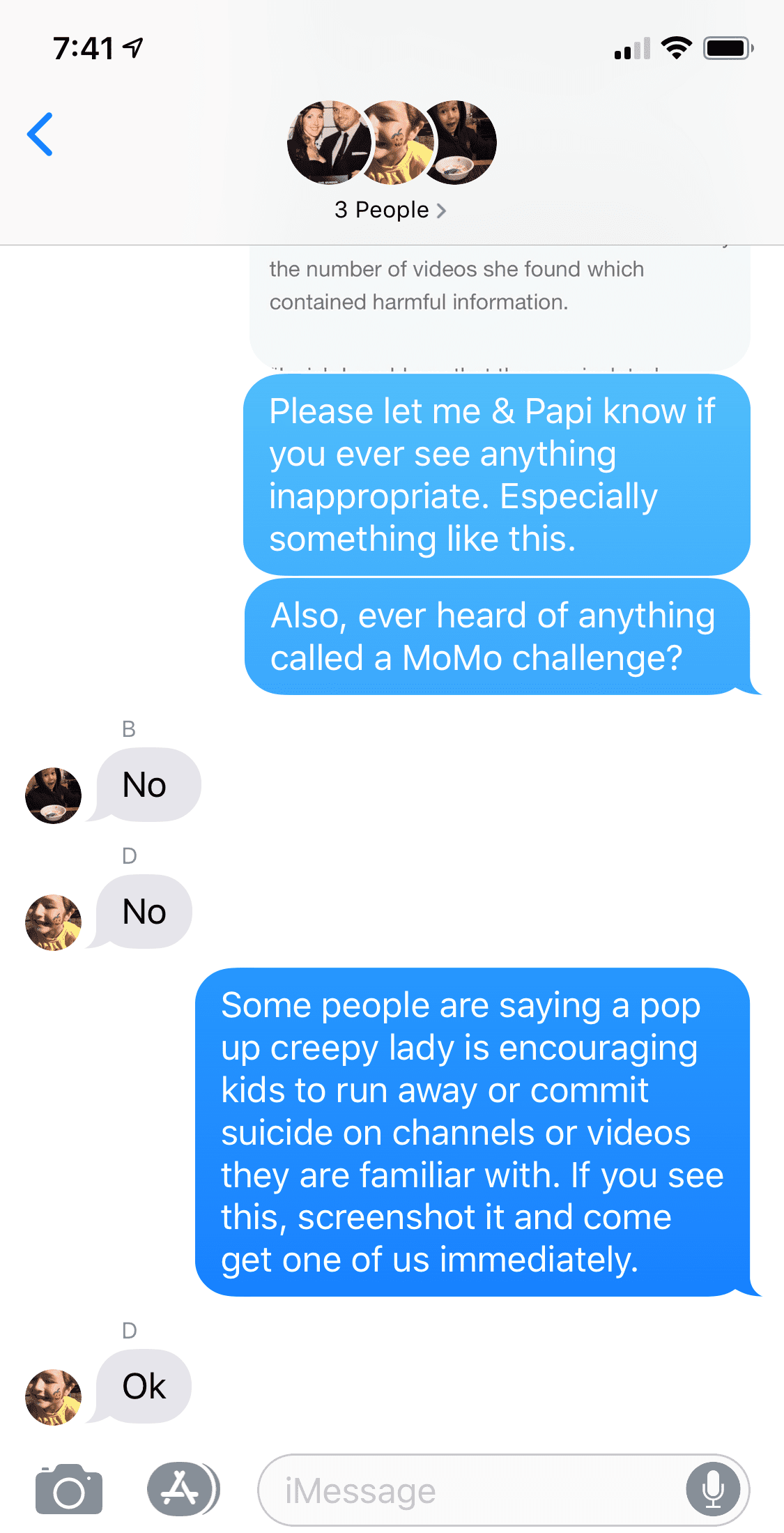It’s NOT About the Creepy Girl :: Lessons From the Momo Hysteria
By now, we’ve all seen the creepy, bug-eyed girl with the long black hair jumping through our screens. These posts are shared by well-intentioned parents, caregivers, grandmas and friends wanting to warn you about a “new threat” popping up on your child’s iPad while they watch YouTube Kids. They are meant to give you information and even scare you into taking action. But what action is necessary?
Take a Deep Breath
First, take a long, deep breath. Let’s put this into perspective. The internet has a way of taking things and blowing them into insanity. This is something we can handle. Our children are going to go to school like normal today. They are safe and warm and happy, and this day is the same as every other day. Read on and I will explain how that long deep breath is warranted, and this Momo challenge is nothing you should spend your time freaking out about.
Fact Check
I, myself, have searched for validity in these claims and through some good old fashioned Snopes (child death trigger warning) fact-checking, discovered that is almost certainly a hoax. A scary hoax and one that we can still take lessons from, but a hoax none-the-less. Not one screenshot exists of this character in any show our children might watch, or any show at all for that matter. Several unrelated suicides in other countries have been linked to an identified game or challenge but no correlation to this Momo image have been found.
Open Dialogue
When I first heard about the Momo challenge, I immediately texted my oldest two and husband to open a dialogue. When we are all home tonight, we’ll talk more about it, but now at least I know they are aware and understand the expectations. Review internet safety, what your rules are around what to watch and what not to watch, and ensure you are in open communication, always. Ensure that your children know to come to you if they see anything shady and teach them to screenshot so that they can show you exactly what worried them. We never punish for honesty – if they got into something they weren’t supposed to and come to us with concern, they are exempt from punishment for that instance. Then, we double-down on their restrictions (more on that in a bit).

Understand the Exposure
The rumors going around state that Momo bypasses any YouTube restrictions and keeps popping up on different channels faster than YouTube can keep up. While this is indeed possible in theory, YouTube experts agree that with reporting, flagging and formulas, the chances of your child being exposed to anything like this is extremely minimal. In fact, the constant sharing of this image and story is more likely to expose your child than any organically evil source.
Set Restrictions & Monitor Usage
Devices these days have a TON of options for restricting both content and time. If you have children using devices, please enable restrictions. Apple has a feature called Screen Time which allows for very customized options for viewing restrictions, content usage and device monitoring. Many services like Netflix, allow you to download content, keeping your child from having to be online to access their favorite shows. Choosing to purchase show subscriptions and movies on iTunes and download to the device will also keep your child from accessing the internet. Have your child watch shows in a public area. Don’t allow YouTube in bedrooms and other closed off areas. Ensure that you can see the screen as you walk by regularly. If none of this makes you comfortable, take a break from the devices. It’s better to be safe than sorry, even if it does nothing more than keep your fears at bay.
Lessons Learned
To recap:
- Take a deep breath. Your child is not in any immediate danger.
- Fact Check. The Momo challenge is almost certainly a hoax.
- Open Dialogue. Use this as an opportunity to talk to your children today and often about internet safety.
- Understand the Exposure. The chances that they will see this image in a video on YouTube is slim-to-none.
- Set Restrictions & Monitor Usage. Check and double check your child’s usage and restrict to age and maturity-appropriate content.
















